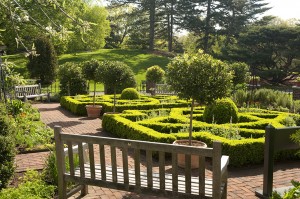Boxwood Blight, A New Menace to the American Landscape
Posted in Gardening Tips on May 14 2013, by Ann Rafalko

Imagine a landscape without boxwood. Some people—who see the shrub as an overused landscape crutch—would welcome it. But what about the home gardener on the hunt for a sturdy, reliable, trusty, deer-resistant shrub to provide their landscape with some backbone? Sure, there are alternatives, but boxwood really can fit the bill in the right design and place. Plus, if you’re a fan of the formal English garden, a world without boxwood is almost unimaginable.
But in the United Kingdom, it’s a real possibility. Home to such famous gardens featuring boxwood as Great Dixter, Sissinghurst, and Helmingham Hall, the gardens across the pond may soon lose one of their most famous plants. Boxwood blight is caused by a fungus known as Cylindrocladium buxicola in the U.K. where it was first found, but is also known as Cylindrocladium pseudonaviculatum or Calonectria pseudonaviculata. The disease was first described in the U.K. in the 1990s, and confirmed in the United States in 2011. It has now been seen in Connecticut, Maryland, Massachusetts, New York, North Carolina, Ohio, Oregon, Pennsylvania, Rhode Island, and Virginia.
